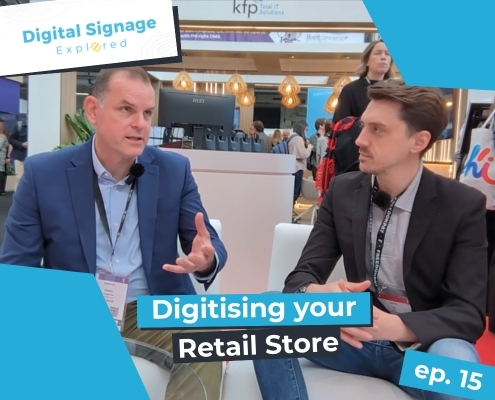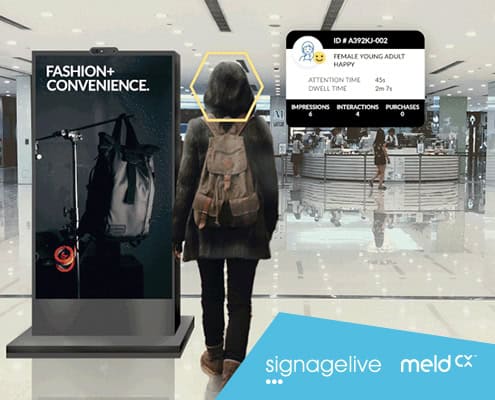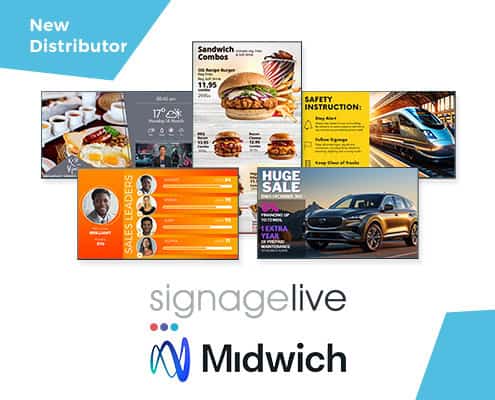Have you ever wondered why, despite your in-store digital transformation, you still struggle to deliver impactful retail Digital Signage?! The truth of the matter is that your technologies and digital platforms may not be enough to ensure success. However, the good news is that, with the right strategic approach, it is possible to re-imagine, and revitalise your current in-store Digital Signage, so that it engages more people and delivers a better return on investment (ROI).
With the help of retail and Digital Signage expert, Simon Clapperton, Sales Director from TPP Retail, we have devised a quick guide on how you can achieve this. Here are our top five tips.
1/ Pain point analysis
It’s important to re-establish why you digitally transformed your stores and need Digital Signage. What challenges did you hope it would overcome? How can your retail Digital Signage boost profitability, and/or save you time and money? Are you trying to reverse a drop in in-store footfall, or dwell time? Is your in-store marketing disconnected from, and less effective than online digital strategies? Are you losing sales and/or the higher margins that you need? Are in-store marketing overhead costs spiralling? Is the in-store experience less modern and convenient than you’d like? Retail Digital Signage can help with all the above problems, but simply installing it isn’t enough. You need a plan, and to leverage specific Digital Signage features that can help you achieve what you want.
2/ Factor in the timing of your digital communications
To understand what kind of digital solution would work best, consider the kind of timing you need for your digital communications to be genuinely relevant. For instance, fast fashion outlets are likely to want to facilitate fast sell-through rates. Consequently, they will probably need information to be delivered to customers at lightning speed. Flash deals will have to be updated at a moment’s notice, in addition to new/end of season launches and sales. Cloud-based Digital Signage systems (CMS) allow for real-time and pre-scheduled updates to be made from anywhere to one, some or all your screens across multiple locations. Moreover, in some cases, their CMS APIs can be used to build a solution that enables you to feed through marketing collateral on your in-store Digital Signage screens, direct from your existing systems.
To maximise your return on invest, you can also use existing customer-facing retail Digital Signage, after-hours, so staff can see, at a glance, an overview of all the most important data insights from multiple different retail platforms, like ERP and PIM systems. You can bring the data insights together via tools, such as Microsoft Power BI, and then display the reports securely on-screen in near real time, using a compatible Digital Signage CMS.
3/ Consider your brand image
Consider what your brand position is and how your Digital Signage solution can potentially help. The type of Digital Signage, and strength and relevancy of your content will clearly need to reflect your brand identity. If you are a high-end retail chain, looking to rival the convenient and personalised experience of online shopping, then it’s important to consider rolling out customised technologies, such as in-store lift and learn solutions. Such technologies offer an unobtrusive personal shopping assistant service, automatically triggering relevant product information to a nearby screen every time a customer interacts with a product on display.
4/ Evaluate your infrastructure and resources
Once you know what you need, it’s time to assess how your existing infrastructure and resources can help fulfil this. Do you have the equipment, and resource required to look after and update your network? Digital transformation represents, as Simon warns, so much more than a technological change. It’s also a cultural shift, impacting how you run your business – who does what and when. Who will monitor your products, and ensure, for instance, that your self-service kiosks don’t run out of paper for printed receipts?
5/ Conduct a test-run
You don’t have to take a leap of faith and simply roll out a retail Digital Signage strategy for all your locations in one fell swoop. To ensure that any new approach works as you expect, and that you have the buy-in of senior management, you can always conduct a test run on one screen, or across a couple of stores. This will flag any potential issues, and most importantly, enable any senior decision makers to envisage, first-hand, how the solution could work, and what it could do for business.
For more tips, tune into our latest Digital Signage Explored episode with special guest, Simon Clapperton from TPP Retail.





You must be logged in to post a comment.